We got up very early in Ambalavao and had our customary breakfast of excruciatingly thick coffee (delicious), bread and jam. We were going to Anja and, to the delight of most passengers, our first visit with wild ringtail lemurs. On the way to the bus, I spotted a chameleon hanging out in a tree and picked it up, which I realized was a no-no when someone started yelling at me.
I put the little angel back and got on the bus before any more drama could occur.
After we left our hotel, we picked up an Ambalavaoan gentleman who was to be our guide through the Anja lemur reserve. He was a chatty patty, let me tell you, and he was not shy about making sexual references. “The lemurs – they make love the way the Malagasy make love.”
Now, some chuckled at this until later when Fano, our guide, elaborated. But for now, we thought this guy was being cute. He did explain something to us that was interesting – apparently in this region of Madagascar, one can tell a person’s marital status by how many gold teeth they have (or a lack of gold teeth). If a woman has gold teeth, it means she’s married. There are variants, I think having to do with how many kids you’ve had and such, but I can’t remember them and think it’s far too complicated.
The guide told us that the Anja nature reserve was put together by the people of the region in an attempt to a) preserve wildlife they were scared of losing and b) make money for themselves from the recent, apparently massive increase in eco-tourism.
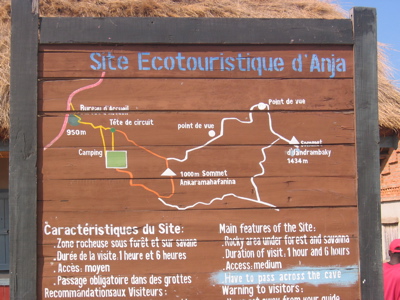
Entrance to Anja, a Lemur reserve.
We hiked for quite some time through very dry terrain until we came to a beautiful lake and trees growing out of the rocks.
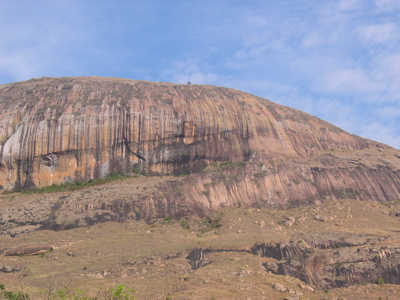
Anja.
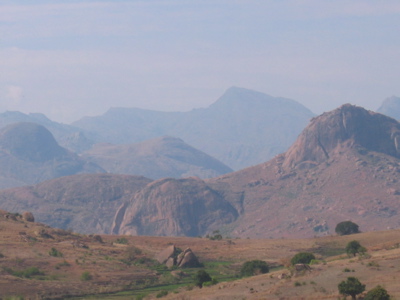
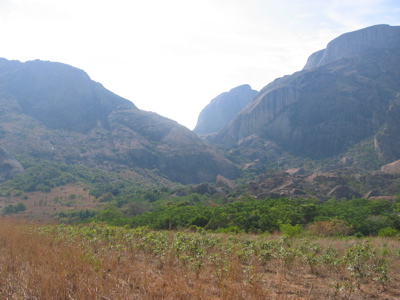
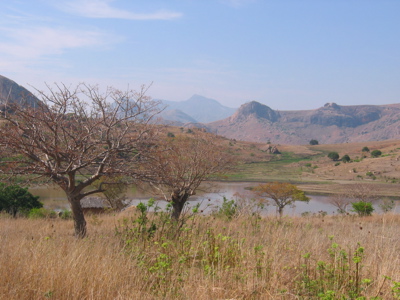
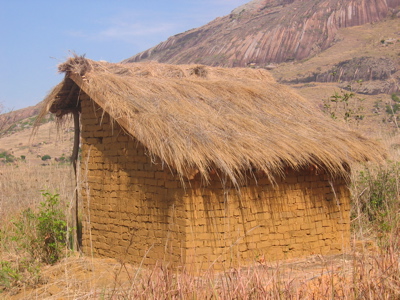
Hut.
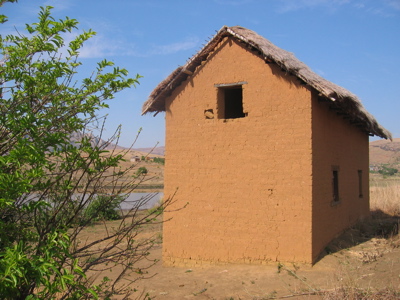
A more impressive hut.
On and on we walked and then the guide stopped us. There, lounging on the rock, was the first ringtail lemur of our journey. It was thoroughly and completely unfazed by our presence. These lemurs are the big draw for most people because of that STUPID CARTOON. I hadn’t been swayed one way or the other about them until I saw this one. I’d seen them in zoos, sadly enough, so I wasn’t expectant. But when I saw this one out in the open, just draped about on that stone, I got a little misty, I have to say. It was beautiful.
Ringtailed lemurs cover much of the southern part of Madagascar. All lemurs are arboreal, or tree-dwelling, but can spend time on the ground as well. They have adapted to the dryer areas of the “spiny forests”, as well as flourishing in the dense scrub forest and riverine closed-canopy forests of the southwest. Ringtailed lemurs are notable for spending about half their time on the ground, and can live in treeless areas, foraging on smaller plants and shrubs.
After we saw this one, we walked a bit further into the trees, and there they all were. It was like that scene in Willie Wonka and the Chocolate Factory (no, not that craptastic remake) when Willie Wonka opens up the doors to the room with the chocolate river and lets the kids run rampant (until that German one drowns).
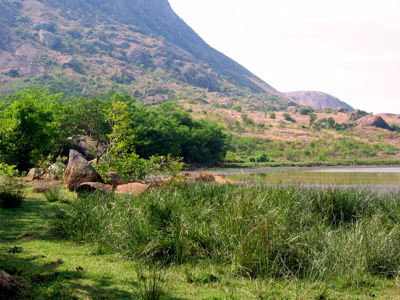
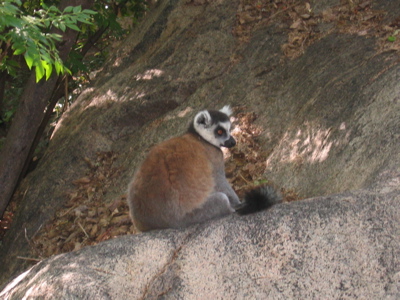
My first ringtail lemur. Look at that punim.
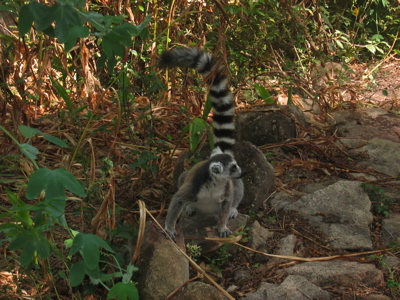
This lemur and I totally bonded. I named it Jerome.
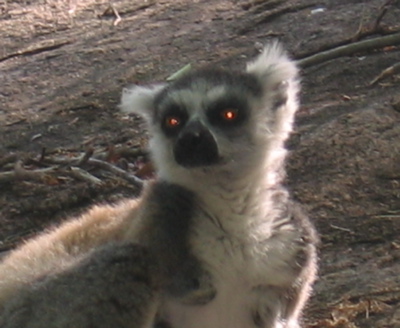
Punim.
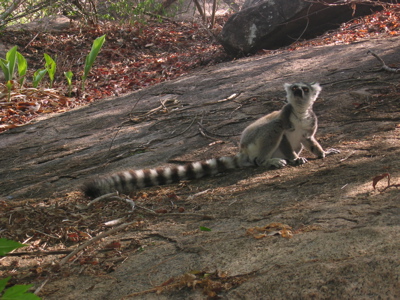
Look at that tail.
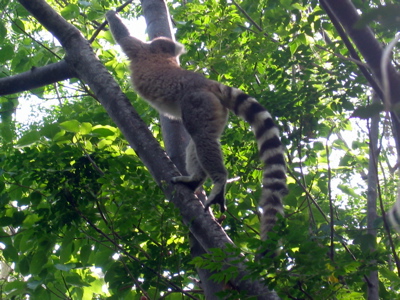
Doing a dance routine.
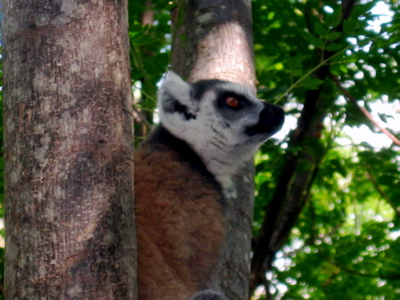
Punim.
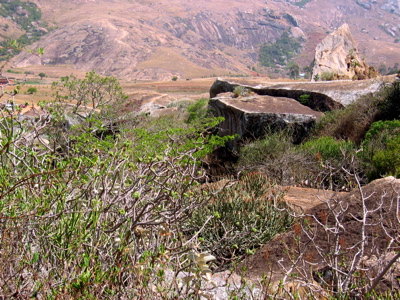
Hiking to more lemurs. Quite a different terrain from the rain forest.
After the first batch of lemurs, we hiked through some pretty rough terrain, up over rocky outcroppings and through caves. We saw succulents, cacti, strange and wonderful insects (which I took better pictures of in the next park, so just hold on until the next posting!), and then – we came back to another batch of trees and there they all were, up in the trees with their babies, sunning themselves and eating. Truly an amazing morning with really incredible lemurs.
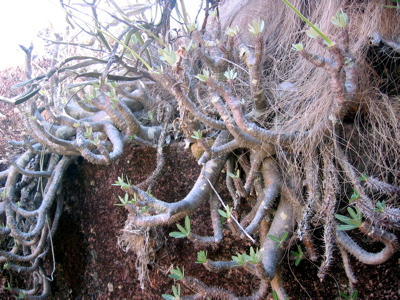
Malagasy plant life.
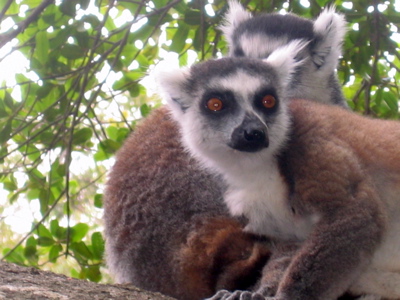
Up close and personal with the little darlings.
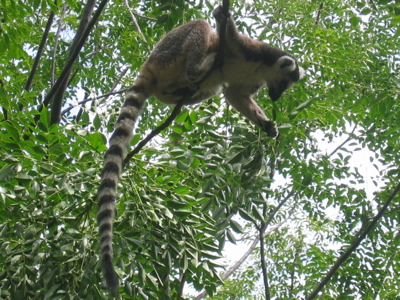
They was everywhere, I tell you.
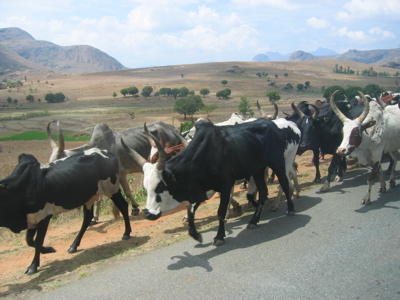
Zebu on their way to the market in Ambalavao.
After we said goodbye to Anja and our lemur park guide, Fano explained a bit about Malagasy relationships. Apparently men can marry as many women as they want, and apparently it is de rigeur to sleep with as many people as you possibly can without falling over from overexertion.
I had seen several signs at the entrances to sad-looking dirt roads that said in red letters, “VIH COMMUNE” (VIH, obviously, is HIV) – so I knew it was prevalent enough that they had modern day leper colonies set up around the country, but I didn’t know how sadly their culture just lent itself to the proliferation of the disease.
After that depressing speech on Malagasy culture, we pulled over at the side of the road to see a sacred mountain. Without fail, though there were no homes to be seen anywhere, children came out of nowhere and descended upon us. This particular batch of children was especially vivacious, doing dance routines and karate moves for all to enjoy.
I went into the bus and got a box of pencils to hand out. Allison took them and handed them out to the kids, who were behaving appropriately until some who hadn’t initially been involved saw what was happening. It turned into a blood bath. One of the drivers had to come over and settle those children down, telling them in no uncertain terms that if they didn’t stop acting like jerks they weren’t getting any pencils.
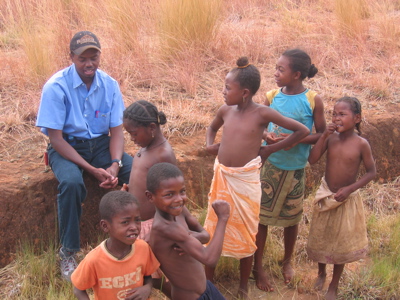
Our guide Fano with some local children.
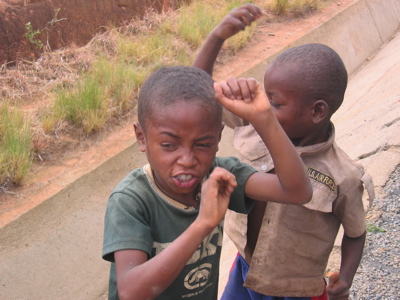
This kid was showing me his karate chop. I told him he needed practice.
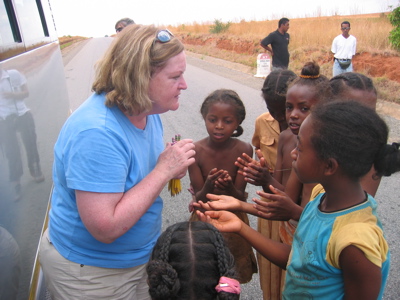
Allison handing out pencils to the children.
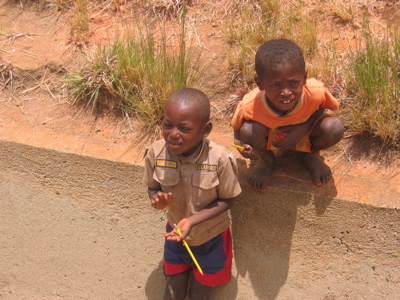
Happy recipients of pencils. If only the little bastards in this country were so easily satisfied.
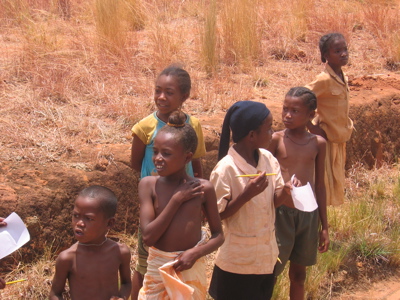
Saying goodbye to the children.
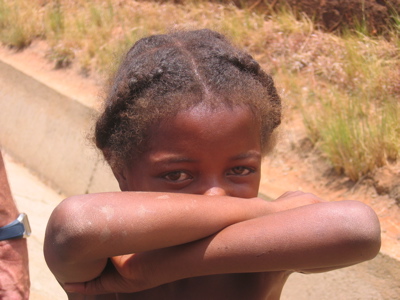
A goodbye pose.
After we said goodbye to the children, we drove and drove and drove and drove and drove on our way to Isalo National Park. We finally stopped for lunch where I had – guess what – legumes sautees. I saw a safe sex sticker on the door to the bathroom. I don’t know, this condom would scare me away. It looks like it’s going to attack.
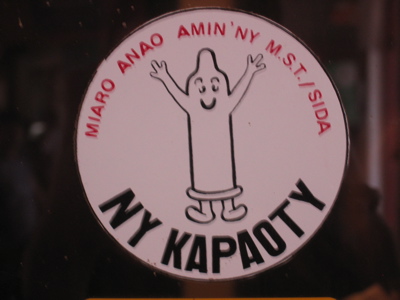
Condom or ghost? We'll never know.

The sunset view from my bungalow at Isalo Ranch.
Before dinner, we were “invited” (forced by the owner, really) to come see what they called a cabaret – the entire staff of the hotel put on a show for the guests that showed examples of each and every Malagasy region’s native dances. Accompanying the dancing was ululating and a band. It was cheesy and touristy but somewhat fun.
This was the first night I was bitten by mosquitoes. The little bastards were everywhere. My roommate and I actually used our mosquito netting, which made me feel like I was in a prison.
We were told to rest up – our trek through Isalo was going to be rigorous, dehydrating, grueling, and exhausting, with extreme sun exposure and chance of death.































